Search results for: 'bronze'
-
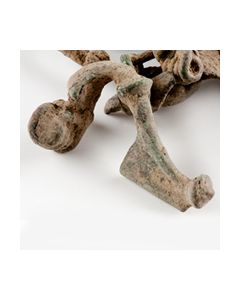 10 römische Fibeln aus Pannonien
10 römische Fibeln aus PannonienDiverse Typen, meist Kniefibel oder ähnliche. Bronze, gute Erhaltung, Nadeln fehlen. Ca. 3. - 4. Jh. n. Chr.
Price: on request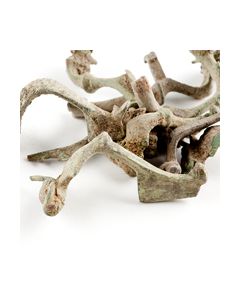 10 römische Fibeln aus Pannonien
10 römische Fibeln aus PannonienDiverse Typen, meist Kniefibel oder ähnliche. Bronze, gute Erhaltung, Nadeln fehlen. Ca. 3. - 4. Jh. n. Chr.
Price: on request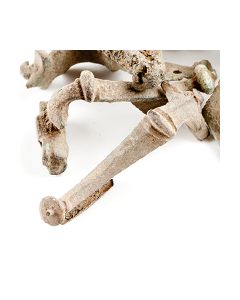 10 römische Fibeln aus Pannonien
10 römische Fibeln aus PannonienDiverse Typen, meist Kniefibel oder ähnliche. Bronze, gute Erhaltung, Nadeln fehlen. Ca. 3. - 4. Jh. n. Chr.
Price: on request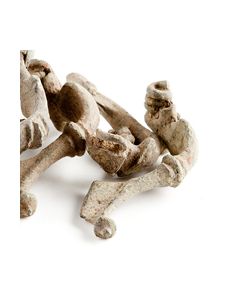 10 römische Fibeln aus Pannonien
10 römische Fibeln aus PannonienDiverse Typen, meist Kniefibel oder ähnliche. Bronze, gute Erhaltung, Nadeln fehlen. Ca. 3. - 4. Jh. n. Chr.
Price: on request 10 römische Fibeln aus Pannonien
10 römische Fibeln aus PannonienDiverse Typen, meist Kniefibel oder ähnliche. Bronze, gute Erhaltung, Nadeln fehlen. Ca. 3. - 4. Jh. n. Chr.
Price: on request 10 römische Fibeln aus Pannonien
10 römische Fibeln aus PannonienDiverse Typen, meist Kniefibel oder ähnliche. Bronze, gute Erhaltung, Nadeln fehlen. Ca. 3. - 4. Jh. n. Chr.
Price: on request Roman specillum
Roman specillumThe so-called specillum is a surgical probe. It was standard issue for roman doctors. Similar probes are still in use today. 1st to 4th cent. AD.
Price: on request Roman plate brooch with colourful enamel
Roman plate brooch with colourful enamelRare fibula type from Roman Britain. The fully intact multicoloured enamel makes this piece worthy of being a museum exhibit. 2nd cent. AD.
Price: on request Roman fibula in lozenge shape
Roman fibula in lozenge shapeAncient brooch in nice condition with remains of the original enamel inlays. Found near the Limes fortifications Pfoerring and Eining in Germany.
Price: on request Enameled Galo-Roman fibula
Enameled Galo-Roman fibulaGrundform einer rechteckigen Platte, erweitert durch Zierknopf an Kopf- und Fußende. Drei Paare von Dreiecken auf der Platte sind durch weiße Einlagen hervorgehoben. Etwa 2. Jh. n. Chr.
Price: on request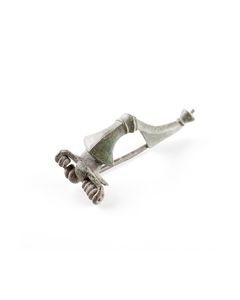 Römische Kräftig Profilierte Fibel
Römische Kräftig Profilierte FibelFibeltyp der späten römischen Kaiserzeit, sogenannte kräftig-profilierte Fibel. 1. bis Mitte 3. Jh. n. Chr., 66mm lang, in museumswürdiger Erhaltung.
Price: on request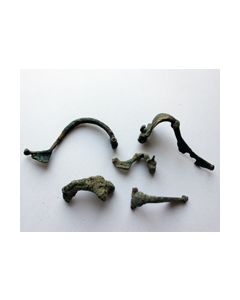 Restbestand - 5 römische Fibeln aus Pannonien
Restbestand - 5 römische Fibeln aus PannonienDiverse Typen. Bronze, gute Erhaltung, Nadeln fehlen. Ca. 3. - 4. Jh. n. Chr. Letzte 5 Fibeln aus dem beliebten Lot.
Price: on request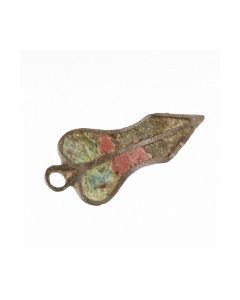 Roman brooch in dagger shape
Roman brooch in dagger shapeInteresting variant of the more common sandal brooch. The colourful enameled brooch has been made in the northern Roman provinces. 2nd cent. AD.
Price: on request Römische Scheibenfibel in Millefiori-Technik
Römische Scheibenfibel in Millefiori-TechnikKunstvolle Fibel aus der Kaiserzeit. Großartiges Beispiel für die antike Millefiori-Technik, die erst wieder in der Neuzeit aufgegriffen und von venezianischen Glaskünstlern zu einer neuen Blüte geführt wurde.
Price: on request Roman fibula with beautiful enamel
Roman fibula with beautiful enamelElaborate work dating to the 2nd century AD. The well preserved enamel is a testimony to the colourful world of ancient art.
Price: on request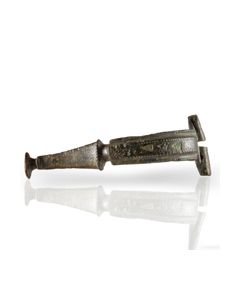 Roman Hod Hill brooch from the Hattatt collection
Roman Hod Hill brooch from the Hattatt collectionNice and rare enameled variant of the Hod Hill type. Found in Norfolk, UK. The piece is published in two books by Richard Hattatt.
Price: on request Römische Kniefibel
Römische KniefibelAntike Gewandnadel vom Typ der Kniefibeln. Körper aus schön patinierter Bronze, 35mm lang. 2. Jh. n. Chr., römische Kaiserzeit.
Price: on request Roman surgical probe made of silver
Roman surgical probe made of silverThe so-called specillum was standard issue for roman doctors. Similar probes are still in use today. Ancient surgical instruments made of silver are extremely rare.
Price: on request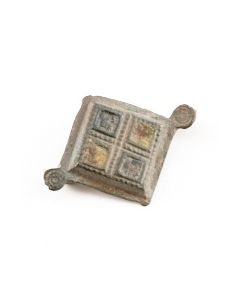 Impressively preserved enameled Roman brooch
Impressively preserved enameled Roman broochIn Britannien und Gallien produzierter Fibeltyp des zweiten Jahrhunderts. Edel patinierte Bronzeoberfläche. Besonders hervorzuheben ist die Emailauflage in selten gutem Erhaltungszustand.
Price: on request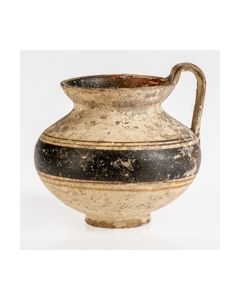 Perfectly preserved hellenistic Chytra from Magna Graecia
Perfectly preserved hellenistic Chytra from Magna GraeciaFrom a German collection, acquired 1970 from Louis Meier, UK (presumably a gallery located in London)
Price: on request Rare frog fibula
Rare frog fibulaZoomorphic fibula dating to the Roman Principate. Very nice enameled work. Rare variant of this popular fibula type from Roman Gaul.
Price: on request Disc brooch from Roman Britain
Disc brooch from Roman BritainNicely enameled brooch with a Romano-Celtic sunburst design. From the 2nd century AD. Published in two stardard works on ancient brooches by Richard Hattatt.
Price: on request Enameled disc brooch from Britain
Enameled disc brooch from BritainColourful enameled brooch from the Roman Imperial period. Published in two stardard works on ancient brooches by Richard Hattatt.
Price: on request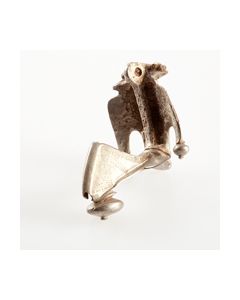 Kräftig profilierte Silberfibel, 2. bis 3. Jh. n. Chr.
Kräftig profilierte Silberfibel, 2. bis 3. Jh. n. Chr.Römische Fibel vom Typ der kräftig profilierten Fibeln. Massives Silber, 34,2g, 100 bis 250 n. Chr. Museumswürdiger Zustand.
Price: on request Roman silver fibula
Roman silver fibulaInteresting type of brooch from the Roman Imperial period. Nice specimen made of silver.
Price: on request Römische Silberfibel aus Pannonien
Römische Silberfibel aus PannonienGewandnadel vom Typ der kräftig profilierten Fibeln bzw. der Trompetenfibeln. Spezifische Variante der Jahre 200 bis 250 n. Chr. aus den pannonischen Provinzen.
Price: on request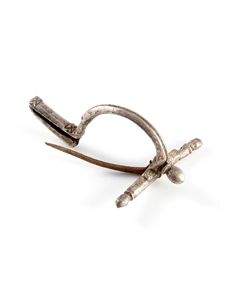 Römische Zwiebelknopf-Fibel aus Silber
Römische Zwiebelknopf-Fibel aus SilberBeliebter Fibeltyp des 3. und 4. Jh. n. Chr. Typischerweise von römischen Männern getragen. Der Träger dieser Fibel aus Silber hatte sicher eine gehobene soziale Stellung.
Price: on request Brooch from Roman Britain
Brooch from Roman BritainA rare mixture of cicada fibula and trumpet fibula, from the 2nd century. Found on the Isle of Wight.
Price: on request Roman Hod Hill brooch
Roman Hod Hill broochMade around the year 100 and found on the Isle of Wight, after the Roman conquest of Britain.
Price: on request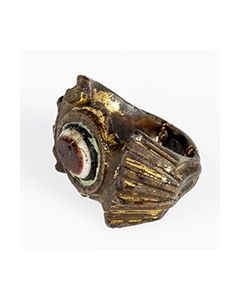 Roman finger ring with imitated agate
Roman finger ring with imitated agateMassive gold plated finger ring dating to the Late Roman Imperial period. The ring impresses with a particularly nice multi-layer glass gem in red, white and black.
Price: on request Rechteck-Fibel aus dem 2. bis 3. Jh.
Rechteck-Fibel aus dem 2. bis 3. Jh.Antike römische Brosche. Dekorierte Platte mit Resten von Email. Typ aus dem 2. bis 3. Jh. n. Chr., 20mm x 33mm.
Price: on request Gorgeous Roman Imperial fibula
Gorgeous Roman Imperial fibulaThe large bow is dominated by colourful enamel. It is a brooch type that developed during the 1st cent. AD in Central Europe.
Price: on request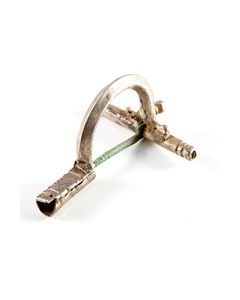 Römische Zwiebelknopf-Fibel aus Silber
Römische Zwiebelknopf-Fibel aus SilberBeliebter Fibeltyp des 3. und 4. Jh. n. Chr. Typischerweise von römischen Männern getragen. Der Träger dieser Fibel aus Silber hatte sicher eine gehobene soziale Stellung.
Price: on request Roman plate brooch
Roman plate broochBeautiful example with orange and turquoise enamel. A find from 2nd century Roman Britain.
Price: on request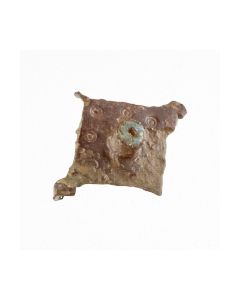 Roman fibula from the Richard Hattatt collection
Roman fibula from the Richard Hattatt collectionLozenge-shaped ancient roman fibula. The piece is published in the standard work "Iron Age and Roman Brooches". Found in Britain.
Price: on request Roman fibula from the Richard Hattatt collection
Roman fibula from the Richard Hattatt collectionLozenge-shaped ancient roman fibula. The piece is published in the standard work "Iron Age and Roman Brooches". Found in Norfolk, England.
Price: on request

